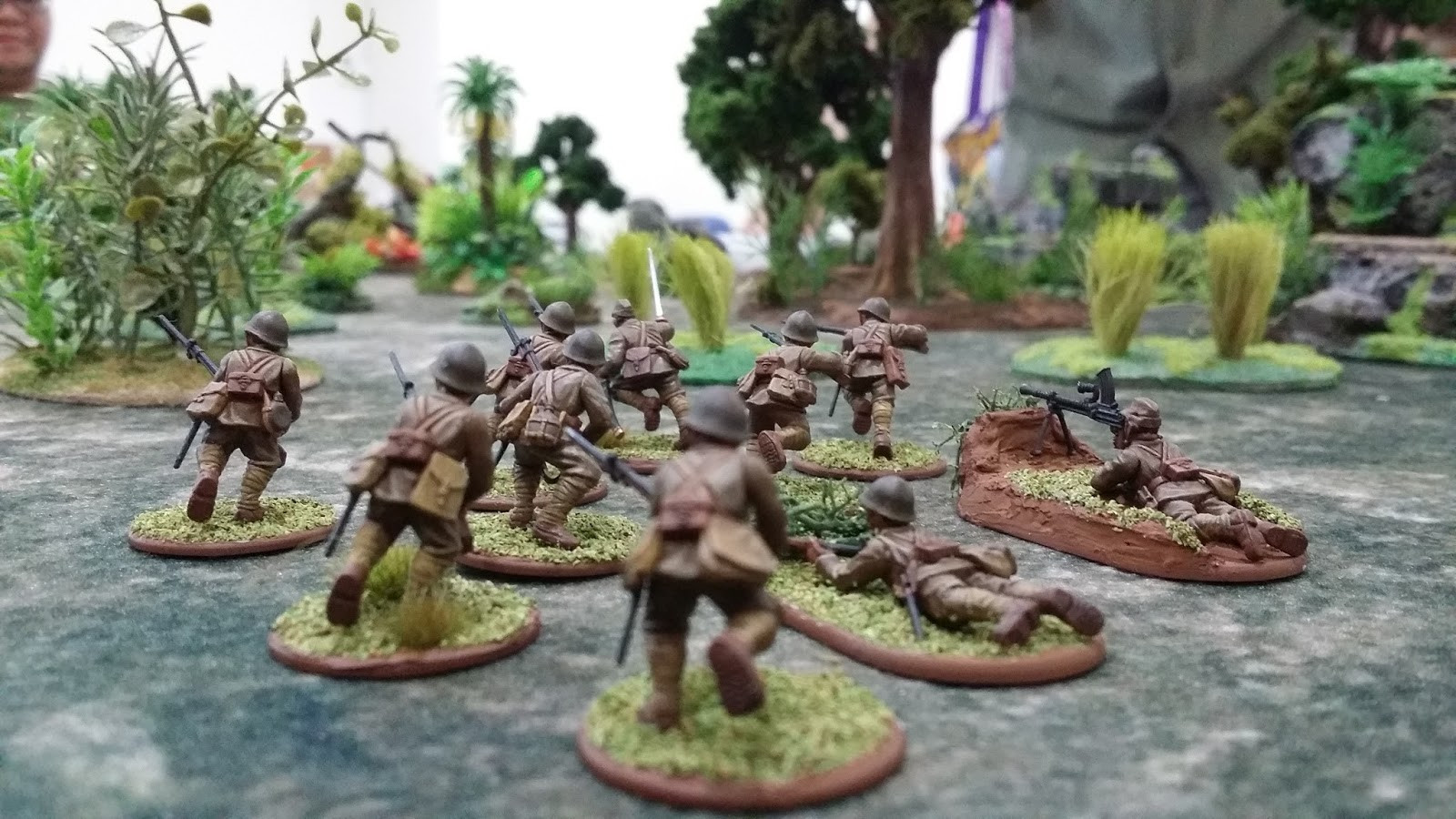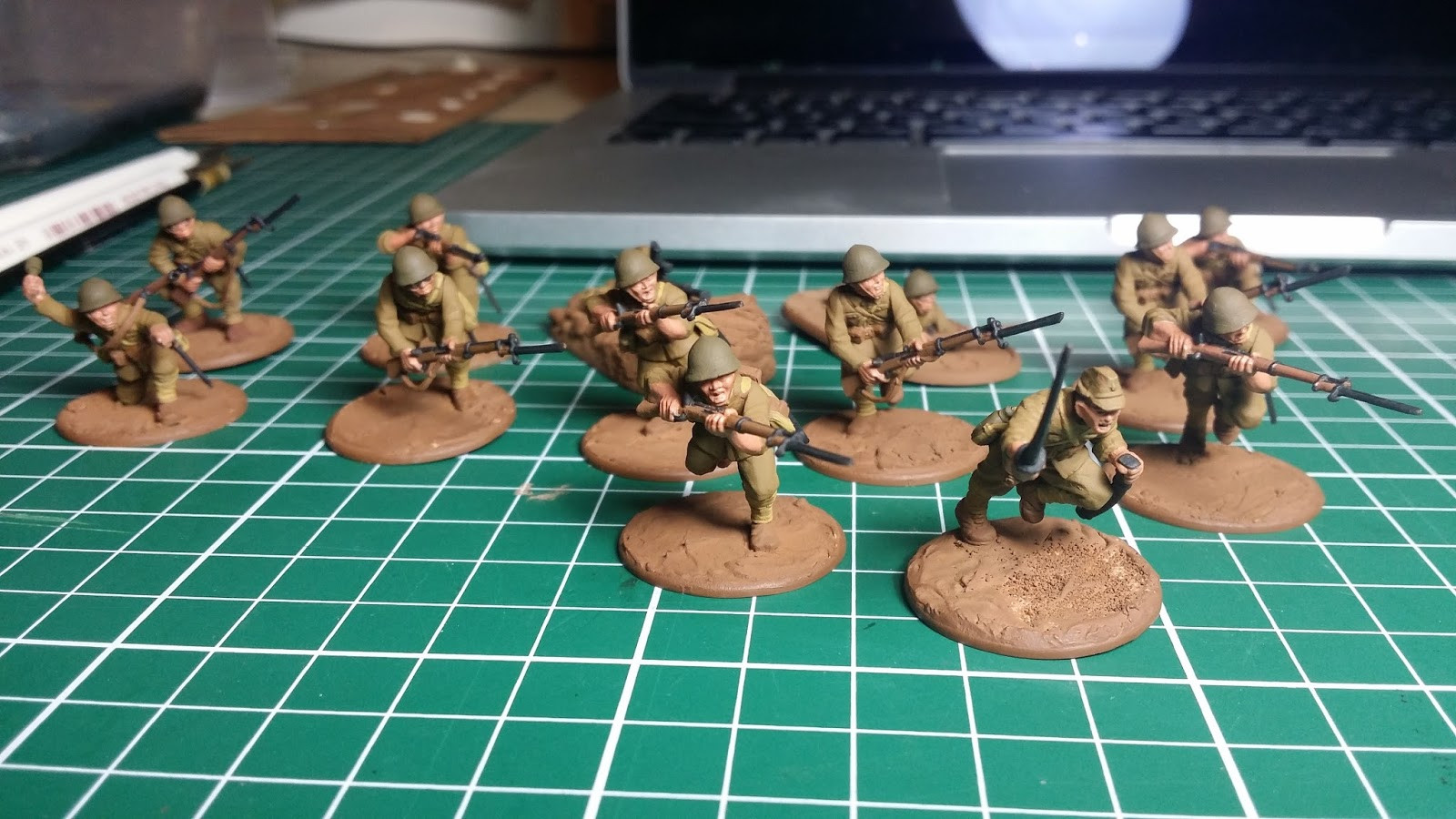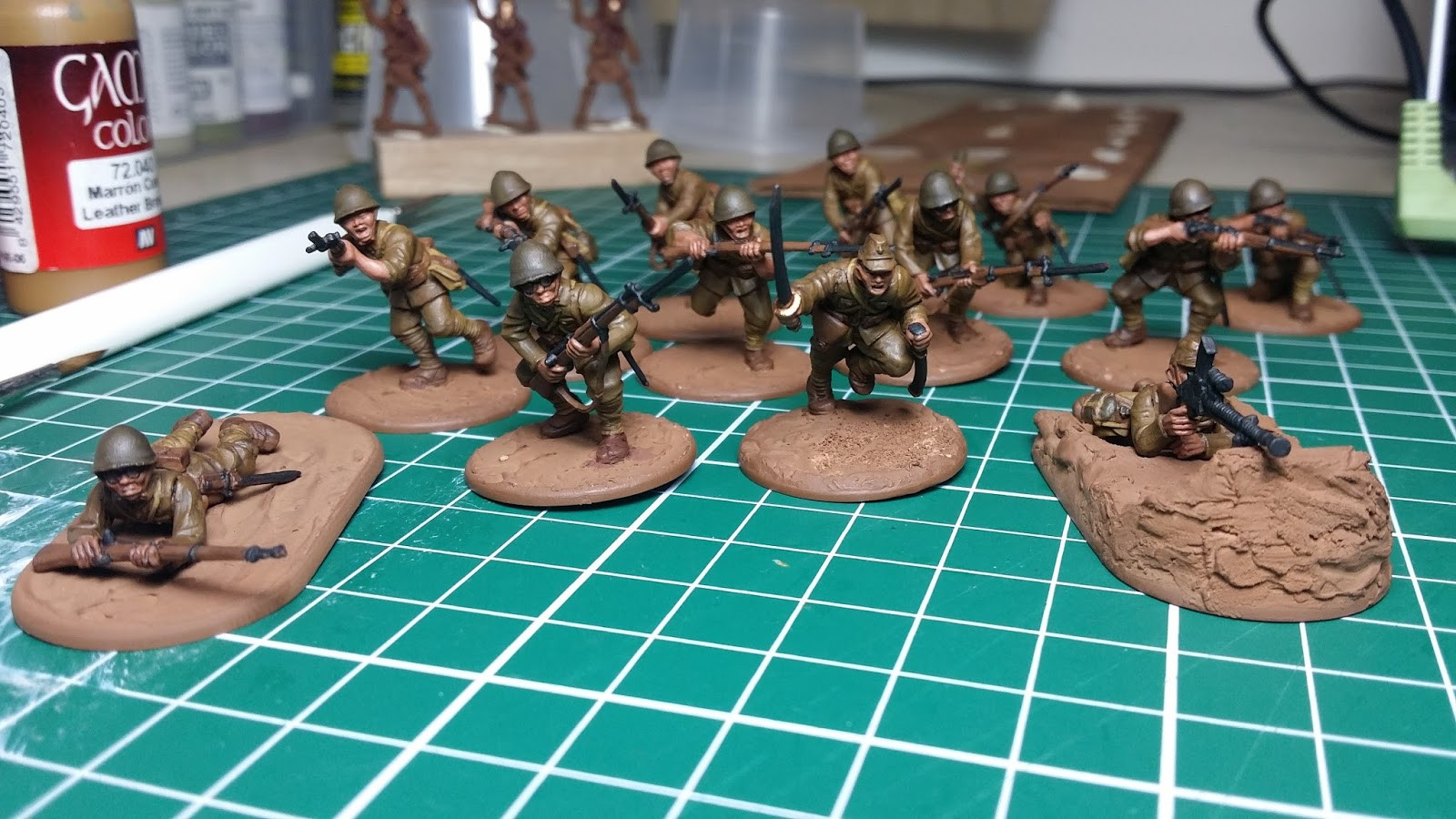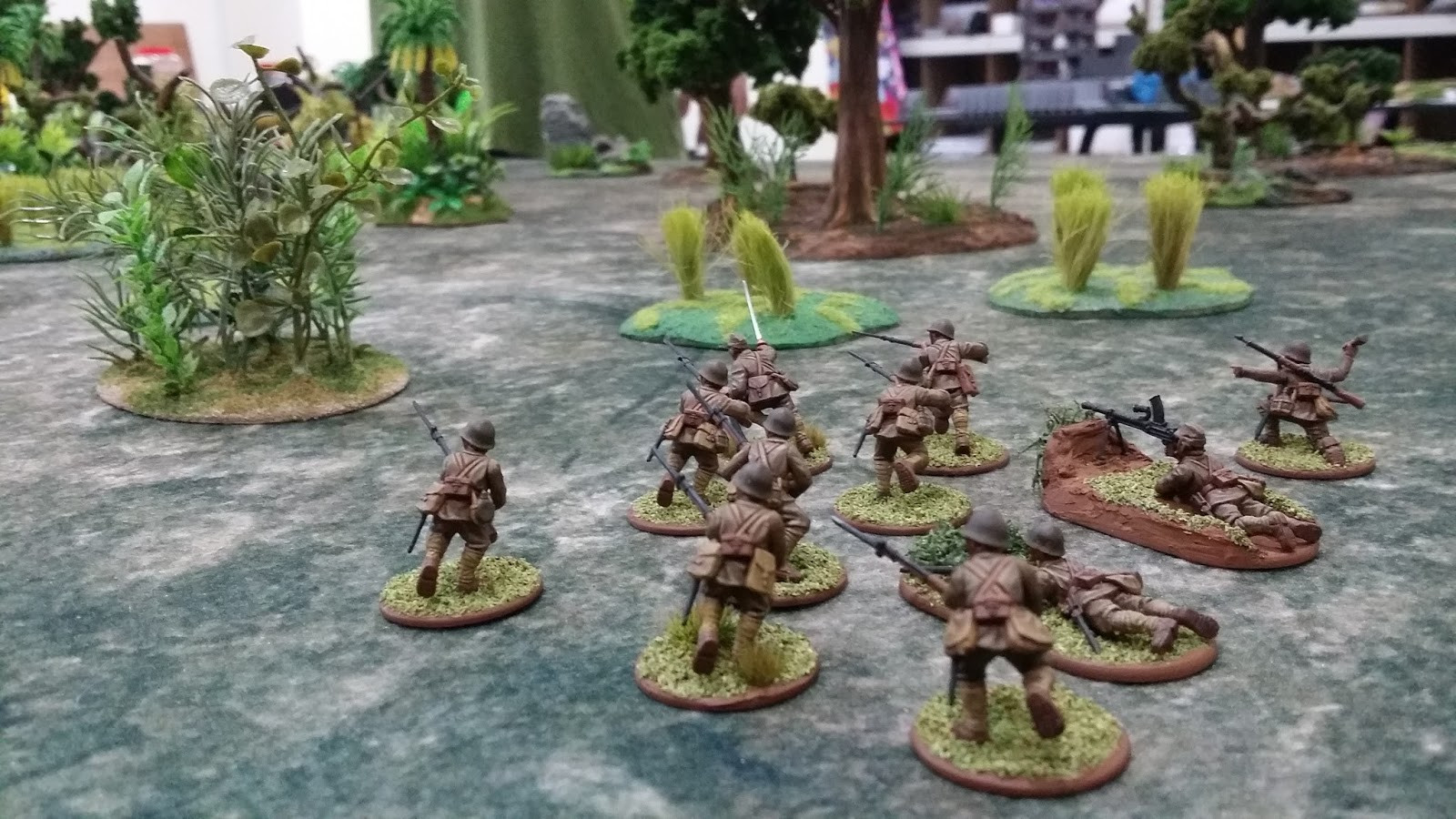Creating authentic representations of historical military uniforms is a key aspect of miniature wargaming and historical modeling. For enthusiasts focusing on the Imperial Japanese Army (IJA) during World War II, achieving the correct uniform color is crucial. This guide explores a method for painting WWII Japanese uniforms on miniatures, drawing on historical references and practical painting techniques.
The quest for the right color for WWII Japanese uniforms can be challenging. Historical sources and color plates often depict a green-hued uniform, as seen in Osprey publications and specialist books like Ritta Nakanishi’s “Japanese Infantry Arms In World War II.” However, commercially available paints marketed as “Japanese Uniform” can sometimes appear too yellow, deviating from these historical references.

Alt text: Close-up of a WWII Imperial Japanese Army (IJA) squad of miniatures in green-toned uniforms moving across a wargaming table, showcasing realistic color and detail.
Historical accounts and variations in uniform production during WWII suggest a spectrum of colors from khaki to green were present. Factors like supply shortages, wear, and environmental conditions contributed to this variation. This historical context allows for some flexibility in color choices when painting miniatures, while still aiming for a realistic representation of WWII Japanese army uniforms.
After researching available paint ranges and comparing them to historical references, Vallejo Model Colour 921 English Uniform emerges as a strong contender for representing the base color of WWII Japanese uniforms. While debates exist among hobbyists regarding the “perfect” shade, English Uniform offers a green hue that aligns well with historical depictions, especially when considering the effect of washes and weathering. This color choice provides a solid foundation for achieving a realistic look for your IJA miniatures.
To achieve a detailed and visually appealing finish, a combination of base coating, washing, and highlighting techniques is effective. Here’s a breakdown of the paint colors and process used to paint these WWII Japanese army miniatures:
Painting Guide for WWII Japanese Uniform Miniatures:
-
Basecoat & Leather Components:
- Spray undercoat with Army Painter Leather Brown.
- Edge highlights on leather areas using a 50/50 mix of Vallejo Beasty Brown (matching the spray) and Foundry North African Flesh B. This is used for belts, shoes, ammo pouches, and rifle stocks.
-
Uniform Base Color:
- Apply Vallejo Model Colour 921 English Uniform as the base coat for the main uniform areas.
-
Puttees and Webbing:
- Use German Camo Ochre Orange for puttees (leg wraps) and bread bags.
- Highlight these areas with a 75/25 mix of German Camo Ochre Orange and Vallejo Pale Sand.
-
Metallic Parts:
- Rifle metal and bayonet scabbards are painted black, highlighted with Gunmetal Grey.
- NCO’s shin gunto sword is based in black, then layered with Gunmetal Grey, and finally highlighted with Silver.
-
Skin Tones:
- Foundry North African Flesh B is used for skin tones.
-
Helmet and Water Flask:
- Create an olive drab shade by mixing Vallejo Model Colour 921 English Uniform with a touch of black for helmets and water flasks.

Alt text: Image showing WWII Japanese miniature figures with base colors applied, including Vallejo English Uniform on the uniforms, before washing and highlighting techniques.
After applying the base colors, an Army Painter Strong Tone wash is crucial for adding depth and realism to the uniforms. A generous coat of wash is applied over the entire figure, ensuring it settles into the recesses and creases of the miniature. This wash darkens and enriches the base color, creating shadows and enhancing details.

Alt text: WWII Japanese infantry miniature figure after application of Army Painter Strong Tone wash, demonstrating deepened color and enhanced shadows for a more realistic uniform appearance.
Once the wash is thoroughly dry, highlighting brings back definition and visual interest. Raised areas of the uniform are highlighted using the base color, Vallejo English Uniform. For sharper highlights on the most prominent edges, a 75/25 mix of English Uniform and Vallejo Pale Sand can be used. These highlights create contrast and make the details of the uniform stand out, enhancing the overall realism of the miniature.

Alt text: Full squad of painted WWII Japanese infantry miniatures in highlighted green uniforms on a wargaming terrain, showcasing the final result with realistic color and detail.
In conclusion, achieving a realistic WWII Japanese uniform color on miniatures is attainable by carefully selecting paints and employing effective painting techniques. Using Vallejo Model Colour 921 English Uniform as a base, combined with Army Painter Strong Tone wash and targeted highlights, provides a historically plausible and visually appealing representation of IJA uniforms for your miniature projects. This method offers a balance of accuracy and ease of application, making it suitable for both experienced and novice miniature painters looking to depict WWII Japanese forces.
